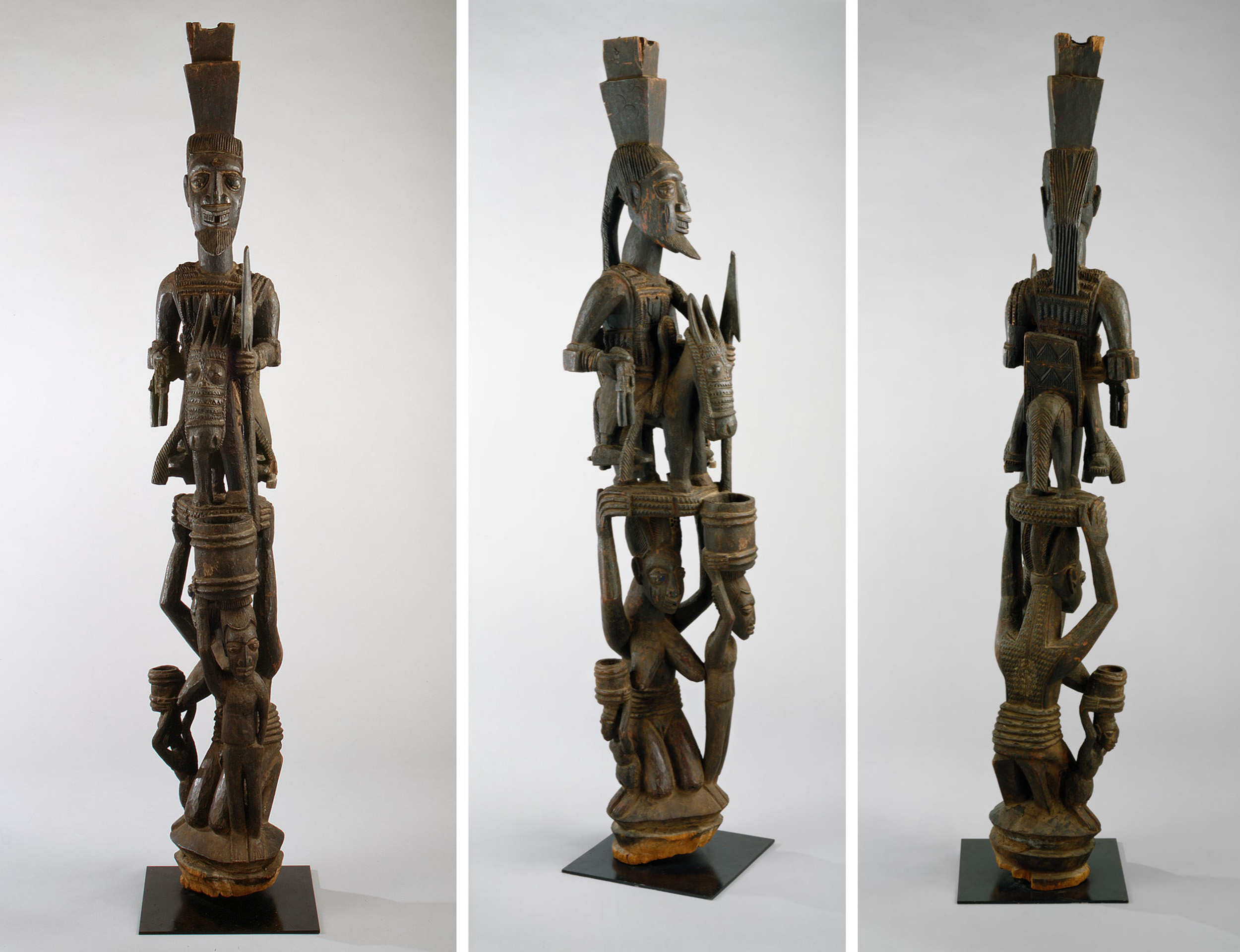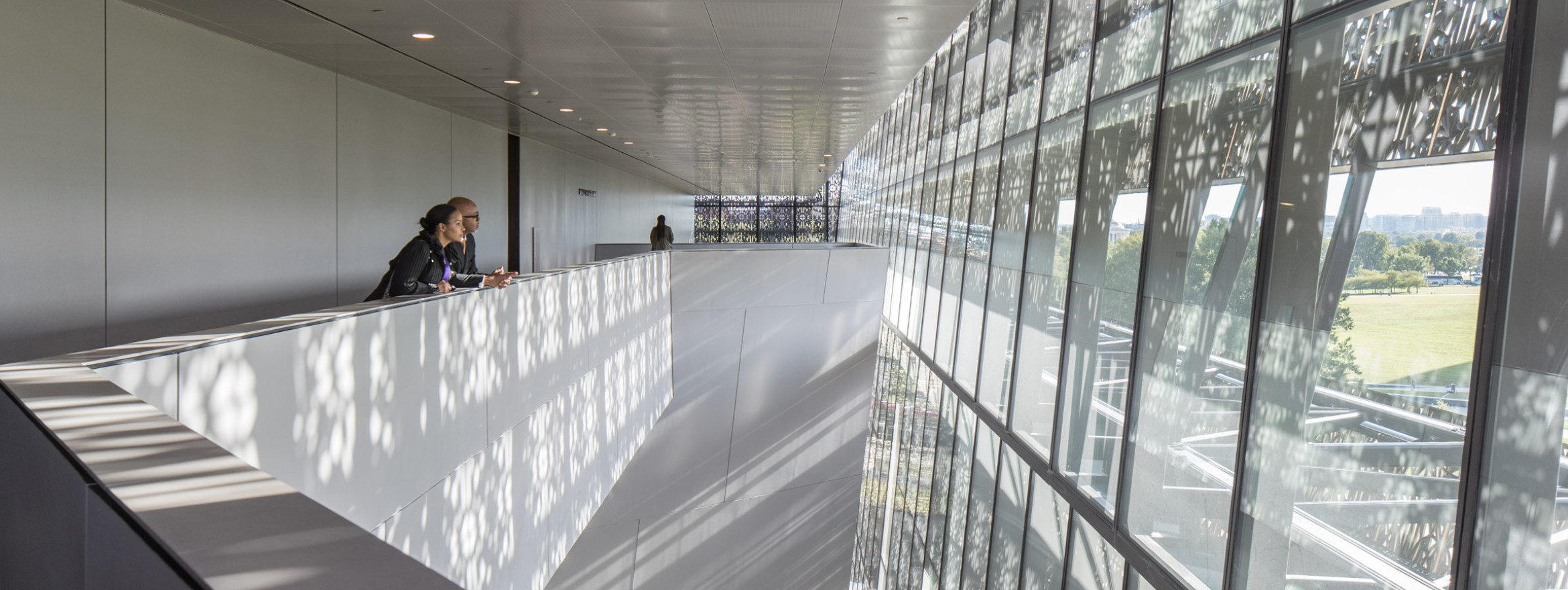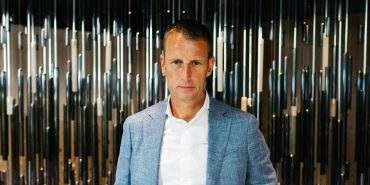Cultural Perspectives • 03 Dec 2019
Who is Sir David Adjaye?
Introduction
Perhaps most renowned for his selection in 2009 as the architect to design the Smithsonian National Museum of African American History and Culture, Sir David Adjaye’s métier in designing beautiful, functional, sustainable and socially uplifting built environments is as comprehensive as his sculptural-material eclecticism and artistic sensibilities. Born in Tanzania to Akan Ghanaian parents, Adjaye had, as an early teenager lived in close to twenty different cities within multiple countries in Africa and the Middle East before his diplomat parents decided to make London his family’s home base.

Encouraged by his father, who himself belonged to a conservative, middle-class family where vocations in the law or medicine were the norm, Adjaye pursued a B.Arch from South Bank University, London in 1990 and then a M. Arch from the Royal College of Art three years later. Having left school, Adjaye partnered with good friend William Russell to form Adjaye and Russell in 1994, before leaving to establish Adjaye Associates in 2000.

Adjaye’s nomadic existence during his formative years fostered a particularly acute sense of cultural sensitivity and exposure to wide-ranging architectural milieu; he remains unshackled from a compunction to possess or convey a trademark style – evidenced in the diversity of scope and appearance of each of his works – inspired by the specific parameters of its physical space, its geographical and historical context, and the intended function of the building. A personal encounter with suffering led to a deeper understanding of social responsibility in architecture: Adjaye recounts the dismal lack of disability support in the ’80’s and ’90’s as he pushed his wheelchair-bound brother around London.

The Idea Stores in the Chrisp Street and Whitechapel boroughs in London are exemplars of Adjaye’s considered approach to, in this case, the respective councils’ drive to increase public subscription to local libraries – which had long languished as outdated, inconveniently situated relics from the past decades – by re-establishing them as “Idea Stores”, library-community centre hybrids offering books, educational courses, and clubs. In reconfiguring these buildings with their distinctive blue-green-clear glass facades – an architectural analogue of the brightly-coloured marketplace-souk contexts in which they sit – Adjaye reduces visual barriers and structural clutter, inviting foot-fall into these refreshed intellectual repositories, which in his words, “are essential to the idea of civilisation.”

The Francis A. Gregory Library in Columbia, Washington D.C., is another distinctive Adjaye structure – with 23,000 square feet set over two stories, encased in a chequered steel frame with large, airy glass windows and crowned by an expansive cantilevered, louvred aluminium canopy, the library is beautifully modern, yet harmoniously congruent to its striking natural environment within the Fort Davis Park. Indeed, the perspective from Alabama Street, which faces the southern facade, is one that is intriguingly luminous; the interaction of the light with the building’s facets inviting one into the library and the sprawling park beyond.

Adjaye has stated in an interview, “We’re obsessed with aesthetics, but we’re obsessed with aesthetics as a solution to problem-solving.” A closer look at the library suggests this might just be true: The plywood modules beneath the glass outer skin, just over a foot wide, house the building’s X-shaped steel diagrids (a diagrid is a load-bearing framework of diagonally-intersecting, usually steel structures; they are more efficacious in resisting shearing moments relative to conventional steel frames) – these deep-set timber apertures offer another benefit: airy window seats, inviting visitors towards the perimeters of the building, where they are afforded leafy woodland views.

Here, an architectural parallel may be drawn with an exceptionally-designed timepiece: highly functional (that is, legible) at the briefest glance, with no betrayal of the purpose for which it was created, that is, to tell the time – yet to a keen observer (or even to an average one), a higher resolution of analysis reveals the extent of consideration to master form, finish, and user engagement – distinguishing it from a merely utilitarian design. A strange paradox to resolve: excellent design must first be unobtrusive, permitting the user straightforward access and to be left in no doubt of its utility or purpose; it ought to be integral to one’s life, not distracting noise. But bereft of harmony, beauty, and cohesive narrative, a work is left without convincing force; to question the utility of beauty is to question the notion of a hierarchy of value, begging the question, “why do anything, or why do anything well?”

Adjaye’s most significant commission to date is the $540mil National Museum of African American History and Culture on the National Mall in Washington, D.C.; tasked to unite the commission of a museum, monument, and memorial in a single entity, Adjaye turned to a source of inspiration that was historically proximal to present-day African Americans, the Yoruba people of West Africa, with whom the former share a common ancestry. Desiring that the Museum be distinct among the neighbouring museums, monuments, and memorials, it was imperative to Adjaye that the architecture represent the story of the museum and its origins in Africa, not to be another “stone box with things in it.”

The Museum sits on what was previously the south bank of Tiber Creek, which was filled in the late 19th century – occupying thirty-nine thousand square feet, of which more than half is below ground, with five storeys above it and a triple-height history gallery, fifty feet high, below it. The post-creek siting presented its own challenges; a peripheral “bathtub” water diversion dam required the collaboration of architects, engineers, curators, exhibit consultants, and building contractors. Builders excavating the site discovered gate pieces from the canal that had once crossed the Museum’s foundations.

Clad in bronze-toned aluminium (bronze was too dense, besides unflatteringly oxidising in the elements – the team eventually settled on coated aluminium, the bronze tone of which took a year to perfect), the now-iconic structure comprised a three-tiered corona of inverted half-pyramids, with a generous, shaded entrance porch. Almost every design element was informed by an element of African-American culture; the porch evoking a place of family gatherings and storytelling; the corona recalling the crowns worn by queens in ancient Yoruban sculpture; the intricate bronzed filigree the ironwork created by enslaved African-Americans in the South.

In a gesture to the Washington Monument grounds on which the Museum stands, its corona is angled at 17 degrees, closely matching the angle of the Monument capstone. Focus groups run by Smithsonian officials revealed that the impression cast by the corona is one of uplift, associated with raised arms towards the sky. Described by judges as “a major turning point in architecture”, the Museum was named Design of the Year 2017 at the Beazley Designs of the Year competition. This year, celebrating the Museum’s moment in contemporary architecture, the American Institute of Architects (AIA) awarded Adjaye Associates and their partners the 2019 AIA Institute Honour Award, for its “sense of place and purpose, ecology, environmental sustainability and history.”

Like all artists – and he certainly is one, with his incredible sensibility and vision – Adjaye regards the responsibility of designing a built environment as profoundly, even tortuously, important, given its multi-generational perpetuity and its role as medium for the transfer of information about its purpose, in the narrative it tells of its habitants – then, now, beyond – and how it resonates within its geographical, social, historical, and spatial frames of reference. He acquiesces that collaboration with artists is inherently challenging; in his own words (video here), “the most critical, most absolutely focussed group of people… if you’re not on target, they’re extremely dismissive.”

And yet he recognises the expansive potential of collaborating with fellow artists, “I love being kept on my toes… the whole premise of collaboration is the ability to enter into a forum of intellects to move something past what you understand, to create a work that lives in the world that comes from the world.”

Artists are absolutely essential to society; the attentive of them represent, or at least elicit an exploration of the most fundamental human archetypes across various media – I say this notwithstanding my materialist-scientist bent – beauty speaks meaning, in the same way that narratives do; consider music, for instance, for which there is no a priori utilitarian basis for our ability to appreciate it. Artists through their work provide a forum for civic discourse; the best of them, like Sir David Adjaye, uphold human dignity and edification by instantiating resilience in the narratives they draw – and in doing so, provide a striking glimpse of the human capacity to create order out of chaos.










